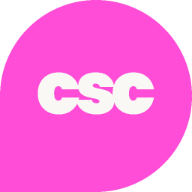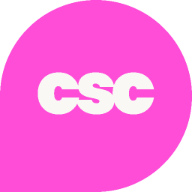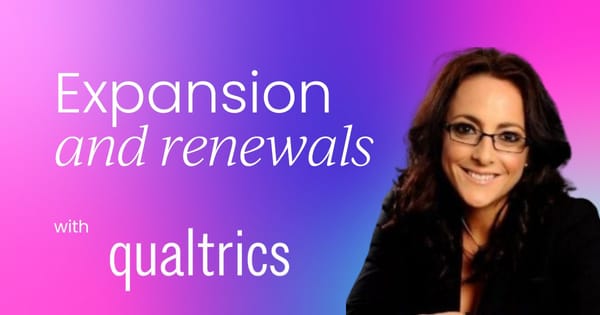Hitting high renewal rates and driving consistent expansion in customer success isn’t easy. With economic pressure mounting and resources tightening, CS leaders are being asked to do more with less – all while keeping customers happy and growing revenue.
At Qualtrics, we’ve managed to maintain a 97.5% renewal rate and hit 151% expansion attainment across our high-touch enterprise and corporate accounts.
In this article, I’ll share the five key principles that helped us get there. These are the strategies that have worked for us, and they might just help you too.
Why experience management matters
Qualtrics is an experience management platform, and we take a holistic view of all experience disciplines – customer, employee, product, and brand. We believe these experiences are all interconnected.
Everything starts with the brand. It’s the external signal of a company’s value, shaped by the products and services it delivers, and most importantly, by its employees. That brand promise is brought to life by the people inside the company and ultimately experienced by customers.
Then, in a continuous feedback loop, the customer experience reshapes the brand. Our solutions help businesses manage this entire loop. That means we’re not just helping companies attract and retain customers, but also their employees.
We currently work with 85% of the Fortune 500, have 2,600 enterprise clients across 41 markets, and partner with 99 of the top 100 global universities. We’ve been growing exponentially, at around 55% year-on-year, and 40% in the last year alone.

Delivering real results
Last year, we achieved a 97.5% renewal rate across our team. That was our average over the entire year, and I’m really proud of it. It wasn’t easy, but we made it happen – with a lot of discipline, teamwork, and sharp focus on customer outcomes. And so far this year, we’re on track for a similar result.
When it comes to expansion, we hit 151% attainment. We don’t disclose exact numbers, but this was a target that required substantial growth across our book of business. We’re essentially asked to grow our customers by an additional 20% on top of renewals. Achieving that level of expansion took alignment with sales, deep account planning, and proactive value realization work from our CSMs.
These figures span both enterprise and corporate customers, though the majority of our accounts are enterprise, and the model we run is very high-touch.
The 5 guiding principles of our success
1. Start with people
When I joined Qualtrics, I inherited a team of six exceptional individuals. Since then, we’ve grown that team to 17. Scaling up while maintaining culture was a top priority for us, so we worked closely with our talent acquisition team to identify the right profile for success.
We reviewed the backgrounds of our 250 CSMs and identified four profiles that consistently delivered best-in-class results:
- People with strong consulting backgrounds
- Program managers with experience running complex initiatives
- Market research professionals with analytical strengths
- Former CSMs with a strong commercial mindset, especially in renewals and expansion

We also put a lot of energy into our hiring process. Candidates go through 6–7 interviews, including cross-functional panels, case studies, and a dedicated cultural fit session. We’re proud of our values – transparent, all-in, customer-obsessed, and scrappy – and we make sure every hire fits them.
That high bar extends beyond hiring. Every quarter, my team assesses me as a manager through our leadership effectiveness survey. It keeps me grounded and focused on being a better leader.
When evaluating candidates, I always come back to three essential traits:
- Book of business management: End-to-end ownership of accounts, navigating internal resources, and managing complex relationships. Our CSMs handle anywhere from two massive clients to 25 smaller ones, and they need to be excellent multitaskers.
- A consultative approach: We want to be seen as trusted advisors, focused on value realization and ROI. That means not just training users, but supporting change management and platform adoption across entire enterprises.
- Technical expertise: Customers expect us to go beyond theory. Like a plumber who doesn’t just tell you how to fix a leak but actually fixes it, our CSMs need to show how our solutions work in the customer’s real-world setup.
We also screen for curiosity and courage. Great CSMs are comfortable asking difficult questions, pushing back when needed, and having challenging conversations around risk, strategy, and execution.
2. Segment and plan territories strategically
Customer segmentation is a core part of our operating rhythm. We group customers into three categories: risk, nurture, and growth. While the formula behind the segmentation is proprietary, the concept is simple:
- Where do we need to mitigate risk?
- Where do we need to hold steady?
- Where can we grow?
This enables us to take a proactive stance on account planning. We build detailed risk mitigation strategies for accounts in trouble and partner with sales to co-create growth plans for expansion-ready accounts.
To help our CSMs plan effectively, we also use a pipeline multiplier. In order to hit their expansion targets, we ask them to build a pipeline that is three and a half times their goal. That kind of visibility gives them a much clearer path to success and helps us plan resourcing across the year.

3. Run a strong operating model
Our operating model is what helps us deliver consistent value at scale. It’s structured around the customer lifecycle, and we’ve built in clear governance, templates, and expectations at every step.
We use standardized materials to ensure consistency – from QBRs and maturity assessments to executive engagement and roadmap discussions. But we also emphasize relevance. A template alone doesn’t cut it.
That’s why we’ve rebranded our QBRs as “QBRs to Wow.” They’re not generic. They’re tailored to the customer’s context, full of insights drawn from deep research and personalized to their strategic goals.
Great QBRs help us tell a clear story: where the customer is today, where they could go, and how we help them get there.
4. Forecast like your success depends on it (because it does)
Forecasting is something we treat as a core discipline, not just a reporting task. We forecast weekly at every level: individual contributor, territory, region, and globally.
We use Clari for this, which I’ve found to be a game-changer. It gives us visibility into the pipeline, forecast trends, and team performance in real time.
In addition to our internal forecasts, we align regularly with sales. We join their calls to review expansion progress, identify at-risk accounts, and track upcoming renewals. This also helps us proactively assign CSMs to new accounts, keeping workloads balanced.

5. Align cross-functionally – it takes a village
There’s no way we would have hit those numbers alone. Cross-functional alignment is everything. Here are some of the teams we work most closely with:
Sales:
We meet quarterly to review churn and down-sell data. If there was a misalignment during the sales process, we flag it and learn from it. We want to make sure what we sell is something we can actually deliver.
Delivery:
Expectation management is key. We align closely to avoid gaps between what was promised and what’s being delivered.
Product:
None of this works without a solid, innovative product. We give ongoing feedback to our product team and help shape the roadmap based on what we hear from customers.
Innovation matters, but what’s equally powerful is breadth. We’ve found that multi-product expansion is where much of our growth comes from. Even among top customers, few have fully adopted all four experience pillars (brand, product, employee, and customer experience).
Marketing:
There used to be some friction between CS and marketing around who owned expansion. We removed that tension and now collaborate closely. We share success stories, co-host events, and drive referrals through our most satisfied customers.
We also partner on one-to-many programs like user groups, thought leadership sessions, and workshops – both virtual and in-person.
Facing the future
Looking ahead, the challenge is shifting. I was fortunate to scale my team last year. But going into next year, our headcount is flat. It’s not about doing less – it’s about doing more with the same.
We’re embracing the "Rule of 40" – aiming for a healthy balance between revenue growth and operating margin. With growth expected to taper, productivity becomes the key lever.
That means simplifying engagement, reducing internal complexity, and leaning harder into automation and self-service. We’re working on streamlining our customer experience so CSMs can focus less on admin and more on delivering strategic value.
One example: we’re exploring an "XM Lead" model, where a single point of contact simplifies customer navigation and drives accountability on our side.
This is the approach that has worked for us. But it’s not a finished playbook. We’re learning and adapting every day. If you're facing similar challenges, I’d love to hear how you’re approaching them. Let’s keep learning from each other.
This article is based on a presentation Natalia gave at Customer Success Festival London 2022. At the time of presenting, Natalia worked at Qualtrics.



 Follow us on LinkedIn
Follow us on LinkedIn





